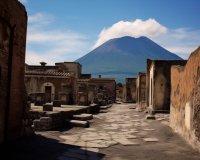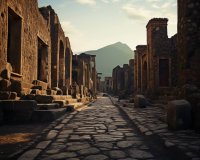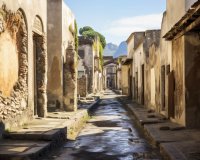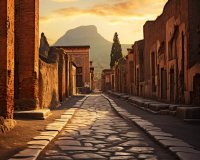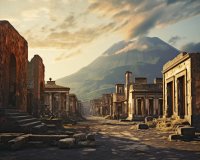Uncovering Secrets: Private Tour of Pompeii and Herculaneum
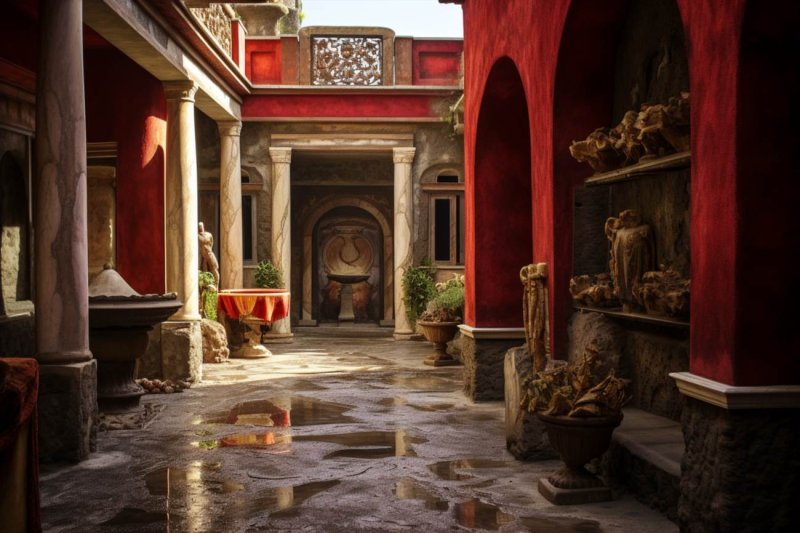
Uncovering Secrets: Private Tour of Pompeii and Herculaneum
Pompeii and Herculaneum, two ancient Roman cities frozen in time by the catastrophic eruption of Mount Vesuvius in 79 AD, have long captured the imagination of history enthusiasts and archaeologists. A visit to these archaeological wonders is like stepping back in time, a unique opportunity to uncover the secrets of daily life in the Roman Empire.
One of the most remarkable ways to explore these ancient cities is by embarking on a private tour. Private tours offer an exclusive and in-depth experience, providing you with the chance to delve into the fascinating history, culture, and architecture of Pompeii and Herculaneum.
The Secrets of Pompeii
Pompeii, located near modern-day Naples, was a bustling Roman city before it was buried beneath layers of volcanic ash and pumice. The well-preserved ruins of Pompeii offer a remarkable glimpse into Roman life, from its grand villas and intricate frescoes to its everyday streets and markets.
A private tour of Pompeii allows you to explore the city at your own pace, guided by an expert who can unravel its secrets. You'll visit the grand amphitheater, where gladiators once fought for their lives, and the Temple of Apollo, a place of worship for ancient Romans.
The famous House of the Tragic Poet, adorned with its "Cave Canem" mosaic, tells stories of a sophisticated society with a strong literary tradition. You can also wander through the once-thriving marketplace, where vendors sold everything from food to pottery.
Herculaneum's Hidden Treasures
While Pompeii is more famous, Herculaneum, a smaller seaside town, offers a different perspective on life in the Roman Empire. Its private tour allows you to discover the luxurious villas and waterfront views that once characterized this affluent community.
The Villa of the Papyri, one of Herculaneum's most famous sites, was named after the vast collection of ancient scrolls found there. The villa's architecture and the contents of these scrolls have provided valuable insights into Roman philosophy and literature.
Visiting Herculaneum also offers a chance to see the ancient beachfront, which still displays its original wooden structures, and the well-preserved baths and mosaics that adorn the town. These elements provide a vivid picture of the leisure and relaxation enjoyed by the Roman elite.
Why Choose a Private Tour?
Private tours of Pompeii and Herculaneum offer numerous advantages. Firstly, you can tailor the tour to your interests and pace, allowing you to spend more time at the sites that intrigue you the most. Additionally, you'll have the undivided attention of a knowledgeable guide who can answer your questions and provide in-depth information about the history and significance of each location.
Moreover, private tours often include access to areas that are off-limits to the general public, granting you a unique and exclusive experience. Imagine exploring hidden corners of these ancient cities, away from the crowds, and getting a closer look at frescoes, artifacts, and architectural details that are often missed on standard tours.
By choosing a private tour, you can also enjoy a more relaxed and personalized experience. You won't feel rushed, and you can take your time capturing photos and immersing yourself in the atmosphere of Pompeii and Herculaneum.
Conclusion
A private tour of Pompeii and Herculaneum is a journey through time, a chance to uncover the secrets of these remarkable ancient cities. From the bustling streets of Pompeii to the luxurious villas of Herculaneum, these tours offer a deeper understanding of life in the Roman Empire. With the expertise of a dedicated guide and exclusive access to hidden treasures, you can make the most of this unique archaeological adventure.
If you have a passion for history and a desire to explore the past in a personal and meaningful way, a private tour of Pompeii and Herculaneum is an experience you won't want to miss.
Pompeii and Capri Day Trip: A Tale of Two Worlds
Embark on an extraordinary 8-hour journey from Naples, unraveling the tragic history of Pompeii, a city entombed by volcanic fury, and then bask in the allure of Capri, a gem adorning the Tyrrhenian Sea. This tour promises a captivating odyssey through time and beauty.
Exploring Pompeii: A Glimpse into Roman Life
Begin the day with a visit to the ancient ruins of Pompeii, a window into the Roman Empire's splendor and day-to-day life. Guided by an archaeologist, wander among the remnants of theaters, forums, Stabian Baths, the House of the Faun, and the House of the Tragic Poet, reconstructing the tapestry of the Roman Republic.
Capri: A Glittering Gem of the Tyrrhenian Sea
Following the Pompeii adventure, board a hydrofoil for a 45-minute voyage to Capri, an epitome of glamor and beauty. Ascend through lemon groves on a funicular to the Piazzetta, where luxury and natural wonders converge. Immerse yourself in the charm of Capri, with its boutiques, local craft shops, and breathtaking views from the Gardens of Augustus.
A Day of Contrasts and Unforgettable Memories
This day trip from Naples promises a vivid juxtaposition of history and beauty. From the ruins of Pompeii to the chic streets of Capri, each moment is a brushstroke painting a vibrant picture of ancient civilizations and modern elegance.
Exploring the Past: Pompeii and Herculaneum
Welcome to the captivating world of ancient Pompeii and Herculaneum, two archaeological gems that provide an unprecedented window into the past. These ancient Roman cities, which were tragically buried by the eruption of Mount Vesuvius in 79 AD, have fascinated historians, archaeologists, and tourists alike for centuries. In this article, we will delve into the rich history and incredible discoveries from these well-preserved sites.
The Tragic Eruption of Mount Vesuvius
The story of Pompeii and Herculaneum begins with the eruption of Mount Vesuvius, one of the most famous volcanic events in history. On that fateful day in 79 AD, a catastrophic eruption blanketed both cities in ash, pumice, and pyroclastic flows, instantly burying them and their inhabitants. The once-thriving urban centers were lost to the world for nearly 1,700 years until their accidental rediscovery in the 18th century.
Rediscovery and Excavation
The accidental rediscovery of Pompeii and Herculaneum occurred during the construction of a well in the town of Resina, near Naples. Workers stumbled upon ancient artifacts and structures, leading to the commencement of large-scale excavations in the mid-18th century. These excavations were carried out by archaeologists like Giuseppe Fiorelli, who pioneered the technique of creating plaster casts of the voids left by the decayed bodies of victims in Pompeii.
Preservation of Daily Life
What makes Pompeii and Herculaneum so remarkable is the remarkable state of preservation they offer. These cities provide a snapshot of daily life in ancient Rome, with well-preserved houses, streets, public buildings, and even graffiti. Visitors can wander through the ancient streets, explore lavish villas with frescoed walls, and gain insights into the culture, art, and technology of the time.
Architectural Wonders
The architecture of Pompeii and Herculaneum is a testament to the sophistication of the Roman civilization. The cities boast beautiful temples, forums, theaters, and amphitheaters. One of the most iconic structures is the House of the Faun in Pompeii, famous for its intricate mosaics and the bronze statue of a dancing faun, which remains one of the most celebrated pieces of ancient art.
Preserving the Past
Preservation efforts at Pompeii and Herculaneum are ongoing. The Italian government and various organizations work tirelessly to protect these fragile sites from natural elements, wear and tear, and the impact of tourism. As visitors from around the world flock to these ancient cities, it's crucial to strike a balance between accessibility and preservation to ensure they continue to tell the story of the past for future generations.
Modern Insights
Archaeological discoveries at Pompeii and Herculaneum continue to yield valuable insights into ancient Roman life. From the diet of the inhabitants to their customs and social structures, ongoing research sheds light on the rich tapestry of this bygone era. Even the tragic manner of their demise offers a stark reminder of the power of nature.
Conclusion
Pompeii and Herculaneum, the two cities frozen in time by the eruption of Mount Vesuvius, offer a mesmerizing journey into the past. As ongoing excavations and research provide new revelations, these archaeological sites remain invaluable in understanding the lives and culture of ancient Romans. The legacy of Pompeii and Herculaneum endures, and their stories will continue to captivate and educate generations to come.
Here is the information about the Pompeii Ruins Guided Tour, including highlights, full description, before you go details, meeting point, and customer reviews. This tour offers a fascinating journey into the ancient city of Pompeii, providing valuable insights into its history and daily life. Choose your preferred options and experience this extraordinary archaeological treasure.
The Mysteries of the Ruined Cities: Pompeii
When we think of ancient cities, Pompeii often comes to mind. This historic city, once thriving and bustling with life, was frozen in time due to the catastrophic eruption of Mount Vesuvius in 79 AD. Today, Pompeii stands as a fascinating archaeological site that provides valuable insights into the daily lives of the ancient Romans and the mysteries that still shroud this city.
Pompeii was a flourishing Roman city, located near the Bay of Naples in Italy. It was a vital trading hub and a popular vacation spot for the Romans, given its beautiful location and temperate climate. Little did its inhabitants know that their lives would be dramatically altered by the deadly eruption of Vesuvius, which buried the city under layers of ash and pumice.
Preservation and Rediscovery
For centuries, Pompeii remained hidden beneath the volcanic debris, until it was rediscovered in the 18th century. The painstaking excavation efforts that followed have unearthed a remarkable treasure trove of information about ancient Roman life. The city's excellent preservation allowed archaeologists to gain a unique insight into the daily activities, social structures, and even the art and architecture of the time.
Walking through the streets of Pompeii, visitors can see houses, public buildings, frescoes, and even the famous plaster casts of the volcano's victims, who were caught in their final moments. The casts provide a haunting yet poignant glimpse into the lives of the city's residents.
The Mysteries
Despite the wealth of information recovered from Pompeii, many mysteries still surround this ancient city. Some of the most intriguing questions include:
- The Warning Signs: Did the residents of Pompeii have any warning before the catastrophic eruption? Some historians speculate that subtle tremors or unusual animal behavior may have given them clues, but concrete evidence is elusive.
- Evacuation: Why did so many people choose to stay in Pompeii instead of evacuating when Vesuvius started erupting? Fear, ignorance, or lack of escape routes may have played a role in their tragic decision.
- The Population: Estimates of Pompeii's population vary, making it difficult to determine how many people perished in the disaster. Some suggest a population of 10,000, while others believe it was significantly lower.
- Their Final Moments: The plaster casts of the victims reveal their contorted postures at the time of death. What were they doing, and what emotions were they experiencing in their last moments?
Legacy and Ongoing Research
Pompeii's mysteries continue to captivate researchers, archaeologists, and historians. Ongoing excavations and advanced scientific techniques offer hope for unraveling more secrets buried beneath the layers of ash.
Today, Pompeii is not just a site of historical significance but also a UNESCO World Heritage Site and a popular tourist destination. Visitors from around the world flock to explore the ruins and reflect on the lives of those who lived there more than two millennia ago.
In conclusion, Pompeii remains a city of both wonder and tragedy, offering a unique window into the past and inspiring countless questions about the lives of its inhabitants and the fateful day when Vesuvius erupted. Its mysteries endure, inviting us to continue our exploration of this ancient city and the secrets it holds.


